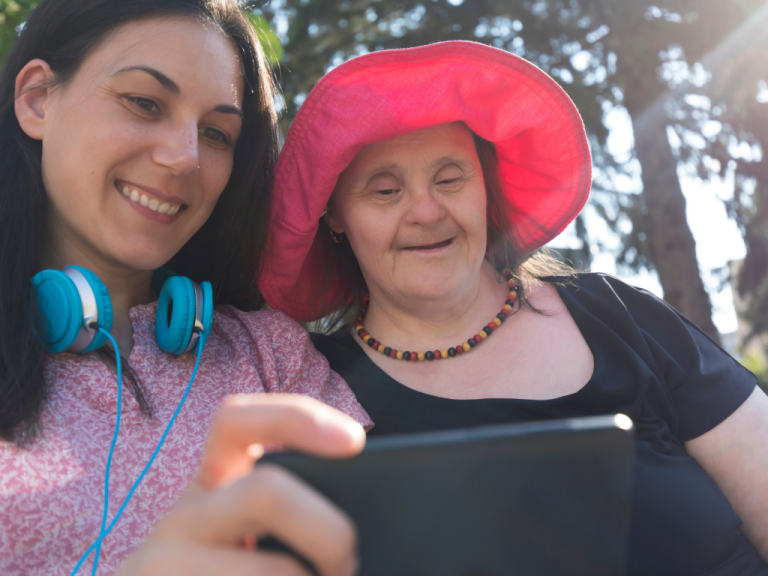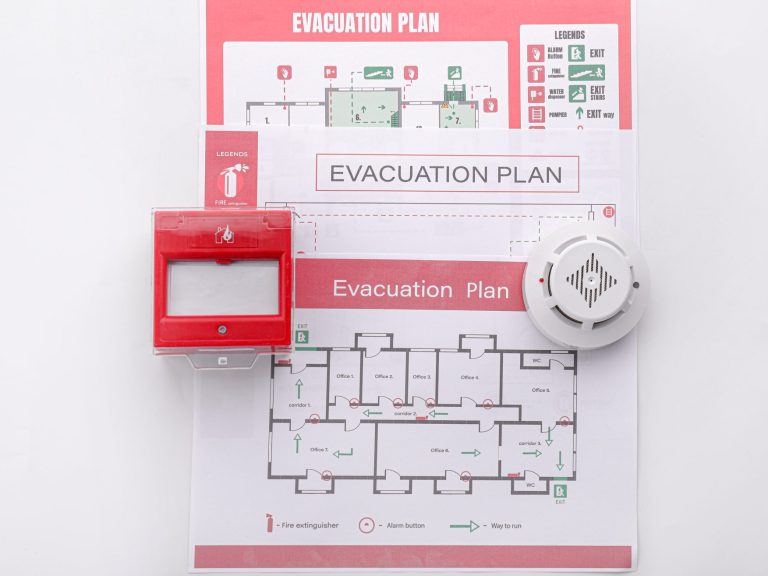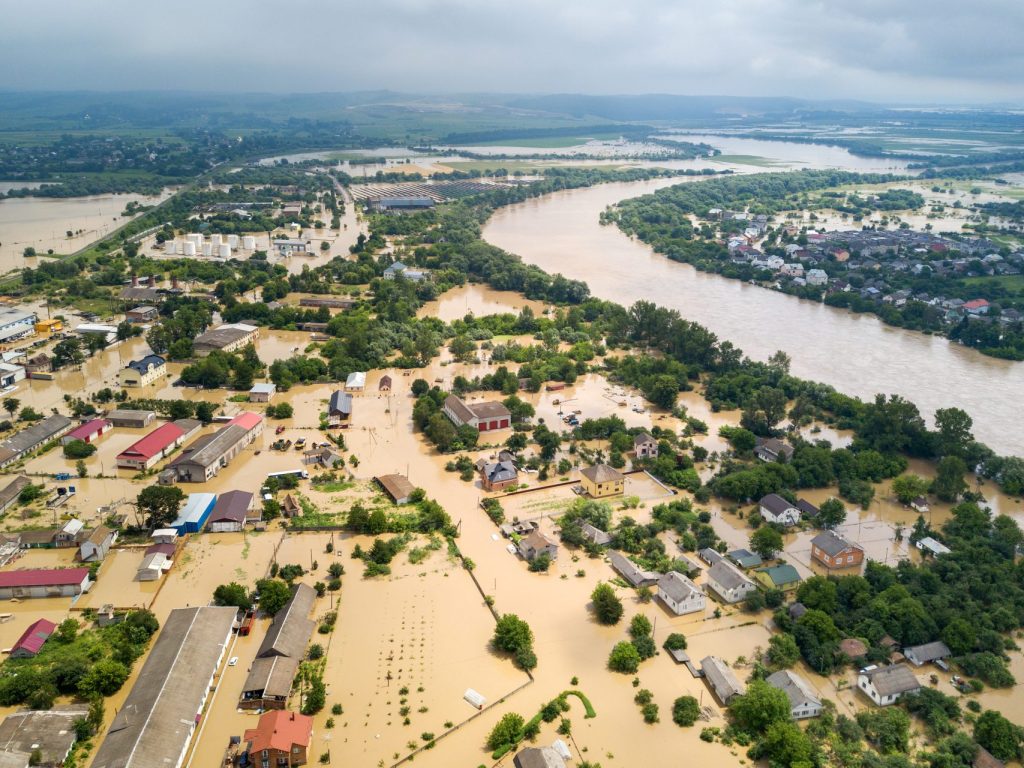Flood emergencies can be particularly challenging for people with disabilities in understanding the risks and barriers to staying safe and/or evacuating. Floods can happen quickly and without warning so planning and being prepared is important to responding to flood emergencies quickly.
On this page:
- Planning and preparing for a flood
- Some important things to consider
- How to explain floods to a family member with Down syndrome
- Who should be involved in developing an emergency plan for your family member with Down syndrome
- Develop an emergency care plan
- Helpful resources and links
Planning and preparing for a flood

Knowing how you and your family member with Down syndrome manage everyday activities is the first step towards being prepared in an emergency. Thinking about what you do in a typical day, where and who with, helps to begin the planning conversation for emergencies such as a flood. Being prepared for an emergency for someone with Down syndrome is a process that should be reviewed, updated and communicated with others regularly.
Knowing what to do
- Have you thought about how you will stay aware of the flood warnings and evacuation orders?
- Listening to ABC local radio, stay tuned to weather forecasts and flood warnings, monitor the VicEmergency app or website, or a friend, neighbour, support worker or carer could help you stay informed.
Communication
- How does the person with Down syndrome best communicate?
- What support do they need for seeing, hearing, speaking and understanding information? (pictures, gestures, Auslan, communication systems?)
- Does the person use assistive devices, technologies, tools or services to communicate?
Assistive technology
- What assistive devices, technology or equipment does the person with Down syndrome use?
- What power source is needed? Is there enough supply for an emergency?
Managing health needs
- Does the person with Down syndrome need support to manage their health, medical or nutritional needs?
- Is this information in their emergency care plan?
- Does the person’s medical equipment need a power source? (battery or electricity)
Personal supports
- Who helps the person with Down syndrome with their self-care or activities of daily living?
- What, when and how is support provided?
- Have you thought about what would happen if support was unavailable?
Assistive animals
- Companion animals and pets need to be considered when planning for an emergency. Do you have the animal’s registration, vaccinations and microchipping information up to date?
- Where are the Vet’s contact details located?
Transport
- How does the person with Down syndrome get around in the community?
- Who is available to help in an emergency?
Social connections
- Does the person have a circle of support?
- Do they know where to go if they ever need support or a place to stay?
Important documents
- Back up important documents, photos, and electronic data to a secure location or cloud storage to prevent loss in case of flooding.
Grab a cuppa and take some notes under each of these categories.
Some important things to consider

Preparing and protecting your property
Take steps to minimize flood damage to your home by installing flood barriers, sealing walls and floors, and elevating electrical systems and appliances. Consider purchasing flood insurance, as standard homeowner’s insurance typically does not cover flood damage.
Secure outdoor furniture, equipment, and other items that could be swept away by floodwaters. Anchor fuel tanks and propane tanks.
Stay safe during a flood warning
If a flood warning is issued, follow evacuation orders immediately. Move to higher ground and avoid walking or driving through floodwaters, as they can be deeper and faster-moving than they appear. Return home only when authorities indicate it is safe to do so. Be cautious of hazards such as contaminated water, structural damage, and downed power lines.
Vulnerable person register
Consider registering the person with Down syndrome with your local council as a vulnerable person, if they might be unable to comprehend or respond appropriately to warnings and directions in an emergency situation.
This register will be accessed by the police if there is an event such as a fire, flood, heatwave, earthquake, explosion, terrorist attack, etc.
Listening to ABC local radio, monitoring the VicEmergency app or website, or a friend, neighbour, support worker or carer could help you know what to expect in flooding scenarios and put your flood plan into action.
What to take with you in the event of an evacuation
- Personal items – phone and portable charger, money, keys, identification, glasses, hearing aids, jewellery
- Essential items – mobility aids, communication aids, assistive technology devices and chargers
- Medical equipment such as CPAP machine, medications and prescriptions, first aid kit
- Important documents – your Will, insurance papers, USB stick with important files and scanned photos, or ensuring they are saved in the cloud
- Overnight bag with change of clothes, toiletries, sanitary supplies
- Bottled water and some food
- Pure wool blanket, battery powered radio, torch and spare batteries
- Protective clothing such as long pants, long sleeved shirts and sturdy shoes. Clothing should be made from natural fibres such as wool, cotton drill or denim and leather shoes if possible, not sandals or sneakers
- A video file with the contents of your home and garage/sheds and photos of any important documents and pieces of equipment with serial numbers
- Pets and assistance animals – add up to date identification tag and a leash, carrier, medication, food and a familiar toy to your emergency kit
Writing a list in advance, suited to your circumstances, and making it available to you and your family and supporters will help you to be ready in the event of an emergency.
How to explain floods to a family member with Down syndrome

Explaining flood warnings and flood evacuation plans involves using simple language, visual aids, repetition and practical demonstrations.
- Utilise visual aids such as pictures, drawings or a visual schedule to illustrate the steps of an evacuation plan. Visuals can enhance understanding and provide a concrete reference.
- Develop a social story about your flood plan and what to do if you are at risk of flooding.
- Practice your evacuation plan and run through packing the car. Consider your exits and practice driving them, using familiar landmarks to help solidify an understanding of the plan.
- Practice regularly to help build confidence and preparedness.
- Seek assistance from your allied health professional such as a speech therapist to develop social stories and visuals about the flood plan.
Taking your time and revisiting this topic regularly will assist your family member to feel safe.
Who should be involved in developing a flood plan for your family member with Down syndrome

Discuss your flood plan with your LAC or support coordinator, including:
- Support required
- The location of your emergency kit
You should also practise putting your flood plan in place with your support worker and provide a list of last minute items that need to be packed with the kit.
Ensuring everyone involved in your family member’s life is aware of the plan is important.
Develop an emergency care plan

- Complete your emergency care plan using this template and save a copy to your computer or phone
- Print copies of your plan, put a copy in your emergency kit
- Give a copy of your emergency care plan to your support worker provider, emergency contacts and your doctor or medical team
- Your emergency care plan has space for your medicines, health information, doctor, hospital and pharmacy information
- Complete the Carer Emergency Card, put the card in your wallet and a card in your family member’s wallet.
Taking your time to follow these steps will ensure everyone is prepared.
Taking your time to follow these steps will ensure everyone is prepared.
Helpful resources and links

- Person-centred Emergency Preparedness Toolkit. Co-designed and tested with people with disability, Person-Centred Emergency Preparedness (P-CEP) enables people to self-assess their preparedness, capabilities and support needs and develop a person emergency plan.
- Planning for Emergencies. Some useful resources from Carer Gateway to assist you prepare for any sort of emergency.
- My safety plan. This guide is about having your own safety plan to help you to be ready for any emergency.
There are many more fabulous resources available online. Spend some time reviewing them.

